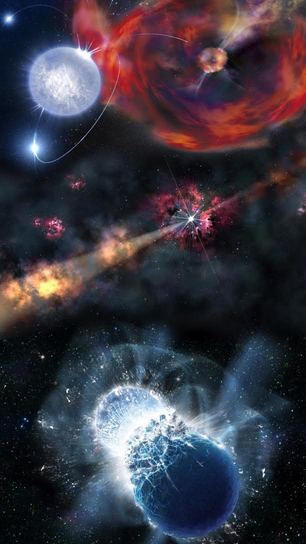High-Energy Transients and their Hosts
 Transients are a hot topic of current astrophysical research comprising a number of different phenomena, some of which can be observed out to very high redshifts. At HETH we are dedicated to study both the physics of the transients themselves and the environments and host galaxies in which those objects are located. Our current research comprises but is not limited to the following objects and their environments:
Transients are a hot topic of current astrophysical research comprising a number of different phenomena, some of which can be observed out to very high redshifts. At HETH we are dedicated to study both the physics of the transients themselves and the environments and host galaxies in which those objects are located. Our current research comprises but is not limited to the following objects and their environments:
- Gamma-ray bursts (GRBs) and their associated supernovae
- Core-collapse supernovae (SNe, especially Type Ic, IIn and superluminous SNe)
- Magnetars and X-ray binaries
- Novae and nova remnants
- Gravitational wave counterparts and other new transients such as fast radio bursts
Our approach is mainly observational using data acquired from different wavelengths. To study the environments and hosts of transients we are focussing on 3D techniques such as IFU and tunable narrowband filter data. We are also using some of those transients (e.g., GRBs and SNe) to derive cosmological parameters.
Last but not least HETH is involved in instrumentation projects. We currently lead the OCTOCAM project (PI A. de Ugarte Postigo), a multichannel VIS-nIR camera and spectrograph proposed for the Gemini Gem4#3 instrumentation call and participate in the SOXS project for ESO/NTT (PI S. Campana).
